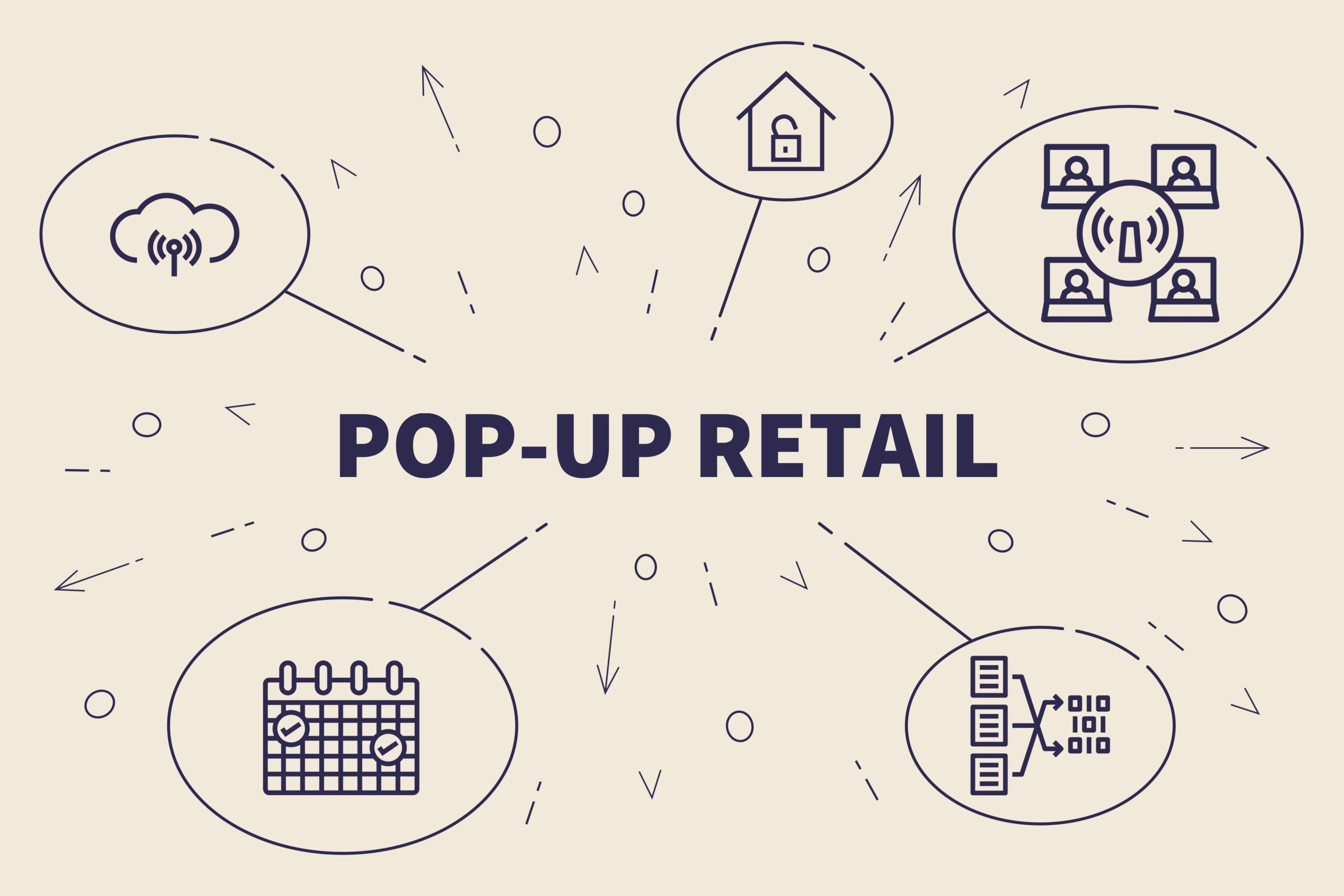“Pop-up Shops make people feel like they’re getting something special that’s only around for a short time, so they have to go there” – Valentino Teoli.
Pop-up retail is an innovative and cost-effective strategy, enabling brands to reach and engage new customers. With a temporary presence in high-traffic areas, businesses can capitalize on current trends and seasonal demands and promote new products. These transient pop-up retail shops generate excitement and urgency around brands and allow for direct customer feedback and market testing. This article explains the pop-up retail concept and impact and provides a step-by-step guide to setting up a successful small business pop-up retail kiosk.
What is Pop-Up Retail?
Pop-up retail, often known as a pop-up retail shops or pop-up stores, is a retail strategy that involves setting up temporary sales spaces for a short period, typically lasting from days to weeks, to capitalize on specific trends, seasonal demands, or scheduled events. This concept allows businesses to engage customers, create unique and immersive experiences, test products or markets, and leverage cost-effective temporary spaces.
Why Do Retailers Employ A Pop-up Strategy?
Retailers employ pop-up retail strategies for several compelling reasons. Firstly, pop-up shops enable businesses to engage customers online and offline, aligning with the trend of multichannel sales. These temporary spaces also offer cost-effective solutions by reducing rental costs, minimizing overhead, and requiring shorter leasing periods.
In addition, pop-up shops allow brands to test new markets without significant financial commitments, fostering brand awareness and trust. Lastly, they facilitate product experimentation and refinement, gathering direct customer feedback and enhancing overall financial health while strengthening brand connections.
How Does Pop-Up Retail Impact Shoppers?
Pop-up retail significantly influences shoppers’ buying decisions through the fear of missing out (FOMO) it generates. Limited-time availability satisfies the consumer’s desire for the latest trends and creates urgency.
Pop-up shops facilitate experiential marketing, allowing brands to engage with innovative ideas and locations with lower investment than permanent stores. This pop-up approach keeps shopping areas fresh and aligns with the increasing importance of consumer experience.
Does Pop-Up Retail Work?
A recent survey by Google of the brands that had experimented with pop-up shops found that:
- 46% reported an increase in sales
- 51% rise in market visibility
- 66% increase in brand awareness and a
- 46% jump in social media engagement.
Six-Step Guide to Setting Up a Pop-Up Retail Kiosk
Retail kiosks are temporary, mobile, and creative setups where businesses can showcase and sell their products or services. A pop-up retail kiosk is set up using the following step-by-step process:
Step 1: Define Your Pop-Up’s Purpose
Before diving into setting up your pop-up store, define a clear objective. Are you building brand awareness, generating new business, testing products, raising awareness, launching a new product, or exploring a retail presence? Establishing your objective guides the planning process, from budgeting to location selection.
Consider your budget, retail location, venue requirements, storage needs, store design, digital and offline synchronization, and metrics for success. Be proactive about permits and licenses, and start marketing early to build awareness.
Step 2: Secure Your Pop-Up Location
Select a location for your pop-up store and ensure it aligns with your goals. Consider construction or road work plans, book your venue, and meet the landlord’s requirements regarding operating hours. Secure insurance, permits, and licenses as needed.
Visit your space to determine its layout, plan window displays, and purchase or rent necessary equipment and furnishings. Hire engaging and brand-appropriate staff, and initiate your marketing efforts to generate buzz.
Step 3: Prepare for a Grand Opening
Prepare your pop-up store’s policies, and plan to draw in foot traffic through marketing and free giveaways. Consider holding events tied to your products or brand. Maintain open communication with your landlord and thoroughly test all systems and equipment.
Decide on your opening event and align it with your marketing efforts for a grand kickoff.
Step 4: Operation
Set your opening and shopper hours, establish employee policies, and address cleaning, maintenance, and technical support. Plan your farewell strategy in line with your objectives.
Step 5: Close and Clean Up
After your pop-up store’s operation:
- Clean and tidy the space.
- Dispose of waste responsibly.
- Disassemble displays and furnishings.
- Return any equipment to the landlord.
Step 6: Evaluate and Improve
Measure your performance against objectives and benchmarks. Analyze success metrics, promote your achievements internally and externally, express gratitude to collaborators, and reflect on your pop-up store experience to inform future endeavors.
“80% of global retail companies that have opened a pop-up store said it was successful, and 58% are likely to use the tactic.” (University of South Carolina College )
Pop-up retail offers a versatile and cost-effective approach to engaging customers, experimenting with products, and exploring new markets. When retailers leverage the power of FOMO and experiential marketing, businesses can create impactful brand experiences that drive sales. From defining your purpose to evaluating success, careful planning is the key to executing a successful pop-up retail operation. Embrace the dynamism of pop-up retail and unlock new opportunities for your brand.
Thank you for reading our article! TimeWellScheduled is a secure online time and attendance software 100% tailored to meet your employee scheduling needs! In addition, our cloud-based solution facilitates attendance tracking and payroll processing and enhances workforce management capabilities. Plus, our service is free for up to 10 employees.






